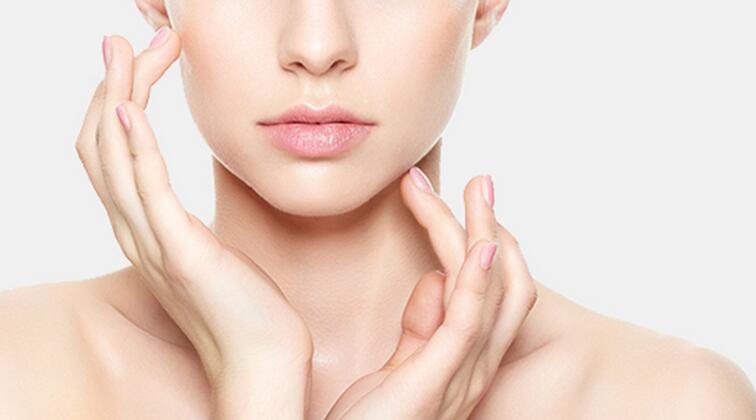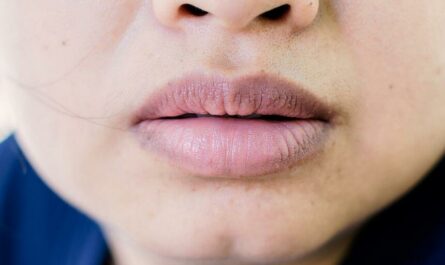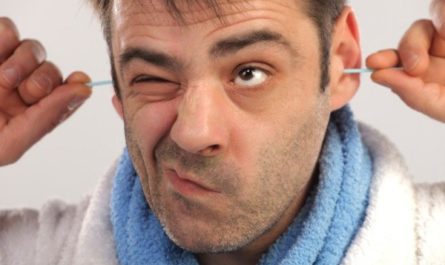Are you tired of looking in the mirror and seeing fine lines and wrinkles staring back at you? Do you dream of having smooth, youthful-looking skin that defies your age? Look no further! In this article, we’ll share expert tips and ideas to help you achieve and maintain wrinkle-free skin. Get ready to turn back the clock and embrace your most radiant self.
Understanding the Causes of Wrinkles
Before we dive into the solutions, let’s take a moment to understand what causes wrinkles in the first place. As we age, our skin naturally loses elasticity and collagen, leading to the formation of fine lines and wrinkles. Other factors that contribute to premature aging include:
- Sun exposure
- Smoking
- Dehydration
- Poor nutrition
- Stress
- Repetitive facial expressions
- Genetics
While some factors, like genetics, are beyond our control, we can still take proactive steps to minimize the impact of other causes. By addressing these underlying issues and adopting a holistic approach to skincare, you can effectively combat wrinkles and maintain a youthful complexion.

Wrinkle-Free Skin Care Tips & Ideas(Complete Guide)
1. Protect Your Skin from the Sun
One of the most crucial steps in preventing wrinkles is to shield your skin from harmful UV rays. The sun’s radiation can break down collagen and elastin, leading to premature aging. Here’s how you can protect your skin:
- Use sunscreen daily: Apply a broad-spectrum sunscreen with an SPF of at least 30 every morning, even on cloudy days. Don’t forget to reapply every 2 hours or after swimming or sweating.
- Seek shade: Avoid direct sunlight during peak hours (usually between 10 am and 4 pm). If you must be outdoors, seek shade under trees, umbrellas, or covered areas.
- Wear protective clothing: Opt for long-sleeved shirts, wide-brimmed hats, and sunglasses to minimize sun exposure. Look for clothing with built-in UV protection for added benefits.
Remember, consistency is key when it comes to sun protection. Make it a daily habit, and your skin will thank you in the long run. It’s never too late to start protecting your skin from the sun’s harmful rays.
2. Hydration is Key
Keeping your skin hydrated is essential for maintaining its elasticity and reducing the appearance of wrinkles. When your skin is dehydrated, fine lines become more prominent, and your complexion loses its radiance. Here are some tips to keep your skin hydrated:
- Drink plenty of water: Aim for at least 8 glasses of water per day to keep your body and skin well-hydrated. If you find it challenging to drink plain water, try infusing it with fruits or herbs for added flavor.
- Use a moisturizer: Apply a rich, hydrating moisturizer twice daily to lock in moisture and plump up your skin. Look for ingredients like hyaluronic acid, glycerin, ceramides, and natural oils like jojoba or coconut.
- Incorporate hydrating ingredients: Look for skincare products that contain hyaluronic acid, glycerin, or aloe vera, which are known for their hydrating properties. These ingredients help attract and retain moisture in your skin.
- Use a humidifier: If you live in a dry climate or spend a lot of time in air-conditioned environments, consider using a humidifier to add moisture to the air and prevent your skin from drying out.
By keeping your skin hydrated from the inside out, you’ll notice a significant improvement in the appearance of fine lines and wrinkles. Plump, moisturized skin looks healthier, more radiant, and more youthful.
3. Nourish Your Skin from Within
What you eat plays a crucial role in the health and appearance of your skin. A diet rich in antioxidants, vitamins, and healthy fats can help combat the signs of aging. Here are some foods to incorporate into your diet for wrinkle-free skin:
- Fruits and vegetables: Load up on colorful fruits and veggies like berries, leafy greens, and citrus fruits, which are packed with antioxidants that fight free radicals. Aim for at least 5 servings per day.
- Healthy fats: Include sources of omega-3 fatty acids, such as fatty fish (salmon, mackerel, sardines), avocados, nuts, and seeds. These healthy fats help keep your skin supple and moisturized.
- Collagen-boosting foods: Consume foods that promote collagen production, like bone broth, citrus fruits, leafy greens, and foods rich in vitamin C. Collagen is a crucial protein that maintains skin elasticity.
- Limit sugar and processed foods: Excessive sugar consumption can lead to glycation, a process that damages collagen and accelerates skin aging. Opt for whole, nutrient-dense foods instead of processed snacks and sugary treats.
In addition to a healthy diet, consider taking supplements like vitamin C, vitamin E, and collagen peptides to support your skin from within. Always consult with your healthcare provider before starting any new supplement regimen.
4. Adopt a Gentle Skincare Routine
The products you use on your skin can make a significant difference in the appearance of wrinkles. Opt for a gentle, nourishing skincare routine that includes the following steps:
- Cleanse: Use a mild, non-foaming cleanser to remove dirt, oil, and impurities without stripping your skin of its natural oils. Look for cleansers with hydrating ingredients like glycerin or hyaluronic acid.
- Exfoliate: Gently exfoliate once or twice a week to remove dead skin cells and promote cell turnover. Use a physical exfoliant (like a scrub) or a chemical exfoliant (like alpha-hydroxy acids or beta-hydroxy acids). Be careful not to over-exfoliate, as it can irritate your skin.
- Moisturize: Apply a rich, hydrating moisturizer to keep your skin plump and supple. Look for ingredients like hyaluronic acid, ceramides, and antioxidants. Don’t forget to moisturize your neck and décolletage as well.
- Treat: Incorporate targeted treatments like retinol, vitamin C serum, or peptide creams to address specific concerns like fine lines, wrinkles, and uneven skin tone. Start with a low concentration and gradually increase as your skin adjusts.
- Protect: Always finish your morning skincare routine with a broad-spectrum sunscreen to protect your skin from UV damage. This step is crucial in preventing premature aging and maintaining the efficacy of your other skincare products.
Remember to be patient and consistent with your skincare routine. Results may take time, but with dedication, you’ll notice a visible improvement in the appearance of wrinkles. Don’t hesitate to consult with a dermatologist or skincare professional if you have specific concerns or need personalized advice.
5. Manage Stress for Youthful Skin
Stress can take a toll on your skin, leading to premature aging and the formation of wrinkles. When you’re stressed, your body releases cortisol, a hormone that breaks down collagen and elastin. To keep your skin looking youthful, it’s essential to manage stress effectively. Here are some tips:
- Practice relaxation techniques: Engage in activities like meditation, deep breathing, or yoga to calm your mind and reduce stress levels. Set aside dedicated time each day for relaxation and self-care.
- Get enough sleep: Aim for 7-9 hours of quality sleep each night to allow your skin to repair and regenerate. Establish a consistent sleep schedule and create a relaxing bedtime routine to promote better sleep.
- Exercise regularly: Physical activity helps reduce stress, improves circulation, and promotes overall skin health. Find an exercise you enjoy, whether it’s walking, swimming, or dancing, and make it a regular part of your routine.
- Connect with others: Maintain strong social connections and reach out to friends and family for support when you’re feeling stressed. Talking about your concerns and sharing laughter can help alleviate stress and promote a positive outlook.
By prioritizing stress management, you’ll not only improve the appearance of your skin but also enhance your overall well-being. Remember, a calm mind and a healthy lifestyle are reflected in the radiance of your skin.
6. Facial Exercises for Wrinkle Reduction
In addition to topical treatments and lifestyle changes, facial exercises can help tone the muscles in your face and reduce the appearance of wrinkles. These simple exercises target specific areas of your face to improve circulation, boost collagen production, and promote a more youthful look. Here are a few exercises to try:
- Forehead smoothing: Place your fingertips on your forehead and gently press upward while raising your eyebrows. Hold for 5 seconds, then release. Repeat 10 times. This exercise helps smooth out forehead wrinkles and lifts the brows.
- Cheek lifts: Place your fingertips on your cheeks and gently lift upward. Hold for 5 seconds, then release. Repeat 10 times. This exercise helps lift and firm the cheeks, reducing the appearance of nasolabial folds.
- Neck lifts: Tilt your head back slightly and look up at the ceiling. Place your fingertips on your neck and gently stroke downward. Hold for 5 seconds, then release. Repeat 10 times. This exercise helps tighten and tone the neck area, reducing the appearance of neck wrinkles.
- Eye area toning: Place your fingertips on the outer corners of your eyes and gently tap in a circular motion. Continue for 30 seconds, then repeat on the inner corners of your eyes. This exercise helps reduce the appearance of crow’s feet and promotes circulation around the delicate eye area.
Incorporate these facial exercises into your daily routine, and over time, you’ll notice a firmer, more toned appearance in your skin. Be gentle when performing these exercises, and avoid pulling or tugging on your skin, as this can lead to further wrinkles.
Professional Treatments for Wrinkle Reduction
If you’re looking for more advanced solutions to combat wrinkles, consider professional treatments offered by dermatologists or skincare professionals. Some effective options include:
- Botox injections: Botox temporarily relaxes the muscles that cause wrinkles, resulting in a smoother, more youthful appearance. It is commonly used to treat forehead lines, crow’s feet, and frown lines.
- Dermal fillers: Fillers like hyaluronic acid are injected into the skin to plump up wrinkles, restore volume, and enhance facial contours. They are often used to treat nasolabial folds, marionette lines, and thinning lips.
- Chemical peels: Chemical peels use a solution to remove the top layer of dead skin cells, promoting cell turnover and reducing the appearance of fine lines, wrinkles, and hyperpigmentation. There are various types of peels, ranging from mild to deep, depending on your specific concerns.
- Laser resurfacing: Laser treatments use focused light energy to stimulate collagen production, improve skin texture, and reduce the appearance of wrinkles. There are ablative and non-ablative lasers, each with different levels of intensity and downtime.
- Microneedling: Microneedling involves using fine needles to create micro-injuries in the skin, stimulating collagen production and promoting skin rejuvenation. It can help reduce the appearance of fine lines, wrinkles, and acne scars.
Before undergoing any professional treatment, consult with a qualified dermatologist or skincare professional to determine the best option for your specific needs, concerns, and skin type. They will assess your skin and recommend a personalized treatment plan to help you achieve your desired results.
Conclusion
Achieving and maintaining wrinkle-free skin is a journey that requires patience, dedication, and a holistic approach. With these tips and ideas, you’re well on your way to achieving the radiant, wrinkle-free skin you’ve always dreamed of. Embrace your journey to ageless beauty, and enjoy the process of nurturing your skin and yourself along the way. Remember, true beauty is timeless, and it comes from within. Embrace your unique beauty, and let your light shine bright.






